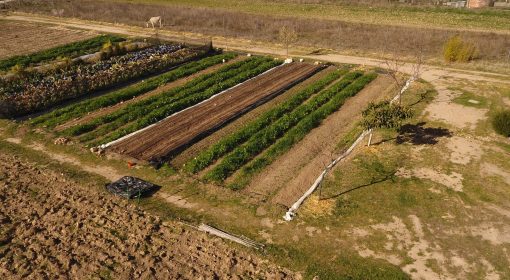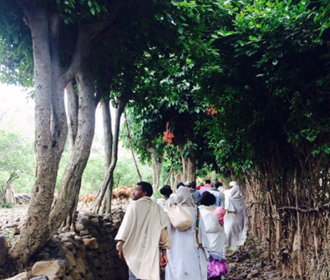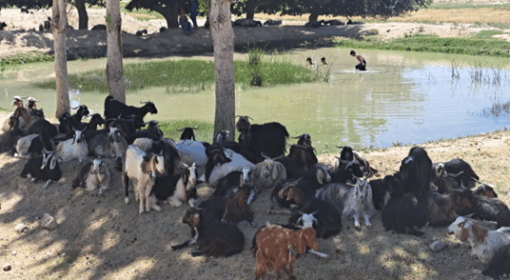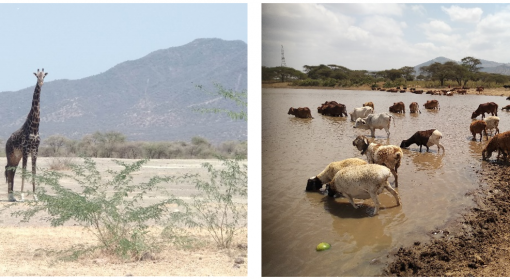by Ashfaque Ahmed Soomro and Frank van Steenbergen
Rangelands are the heartbeat of rural livelihoods and managing microclimates in Balochistan. Being the largest province of Pakistan by area, Balochistan is a land of cultural diversity, a rich natural resource base, rugged mountains, wide valleys and extensive rangelands. Covering nearly 90% of the province’s area, rangelands are not just the source of grazing and biomass, but also home to biodiversity, natural beauty, an absorber of flash floods and buffer to droughts. Fundamentally, in a region where agriculture is limited and subsistence and water are scarce, rangelands are the primary source of sustenance for livestock, upon which thousands of agro-pastoral and pastoral communities are dependant. Approximately, two-third of its population earns part of their living by rearing animals and selling livestock by-products.
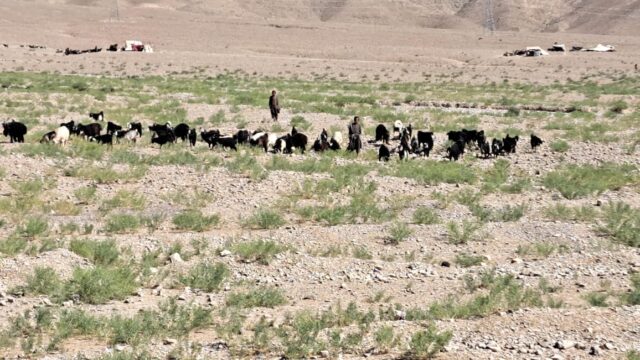
These rangelands are confronted with challenges of a lack of care and confused ownership, overgrazing, climate variability, prolonged droughts, and poor land-use practices, which are degrading these natural resources. Over the period, farmers, experts and development practitioners and planners have reiterated the need for a sustainable, community based inclusive approach with nature-based solutions to manage these resources not only to sustain more than 44 million livestock heads (as per available data by the department of Livestock and Dairy Development, Government of Balochistan), but for managing micro climate and biodiversity for the generations to come, which is an obligation on us. In the context of rangeland management, NbS can restore soil health, improve water retention, reduce land degradation, and increase the resilience of ecosystems to climate shocks.
The management factor
Balochistan’s rangelands are not only wide in the area, but topographically diverse and socially complex too, with unique community and grazing systems. Divided into six type of landscapes, including mountains, uplands, piedmont, desert, flood plains and coastal plains, the ranges of Balochistan are open, with weak or unclear managerial responsibility. Rangeland ownership is not clear or very poorly defined ownership. Community engagement and community based rangeland governance through local user groups, traditional community forums, and grazing committees, can be powerful to make conservation and restoration efforts more culturally fit and impactful. Through these communities, livestock movement calendars and selective closures can be designed and implemented to curtail overgrazing and ensure rotational grazing practices for the vegetation recovery and improve soil health.
Communities, through social structures, should be motivated to keep high-value flocks, instead of large and low value flocks. In Balochistan there are climate resilient and high profitable breeds of cattle, sheep, goats and camels, which can be game-changer for local economy and ecology. To materialize these efforts, policy and investment must prioritize community-led initiatives, especially those involving women and youth, community elders and build their capacities to make rangeland management a rural development and climate change adaptation agenda point.
The promise of nature-based solutions
Along with social tools and approaches, nature-based practical solutions can be very effective to restore degraded rangelands and increase ecosystem resilience. Reseeding native grasses, can enhance forage availability while promoting ecological balance and drought tolerance. Pasture cropping maybe possible in some area, where drought tolerant crops (such as oats) are grown on the pasture, providing fodder and stubble – and increased the biomass. Capitalizing flood runoff, rainwater harvesting techniques, micro-catchments, can preserve the green spots, but can also improve groundwater recharge, and create favourable conditions for plant regrowth. Agroforestry and silvopasture systems, contour ploughing, or stone bunds to prevent erosion, local seed banks for surrounding degraded areas, fenced areas to allow vegetation regeneration, improving moisture retention, soil stabilization, regeneration of local species/plants, can be some of the effective nature-based solutions to better manage rangeland resources in Balochistan, making them climate resilient. Many of them are globally tested. What is needed is not knowledge, but initiative – to tackle the challenge and the opportunity of managed rangeland – contributing to a strong low water economy and resilient – not degraded and depleted – landscapes in Balochistan,
Carbon sequestration, and even more collapsing local climates
Then there is the carbon sequestration and soil organic matter argument, and it is very spectacular. Professor Andre Leu of Regeneration International has made a strong case that carbon in soils, known as soil organic matter (SOM), has been significantly depleted and oxidized into CO2 due to the expansion of industrial agriculture and the wholesale degradation of arid lands. By his reckoning the loss of Soil Organic Matter (SOM) from ploughing, fertilizing, overgrazing, and erosion has added more than 100 Gt of CO2 to the atmosphere, compared to an attribution from fossil fuels and cement amounting to 36 Gt and forest clearance of 5 Gt.
But it is not just the global climate that is affected, it is very much the local climate that goes down under. There is the immediate effect of soils becoming bare through overgrazing and mismanagement, going to heat up the atmosphere. The difference in impact on air temperature between well-vegetated and bare soil can easily exceed 20 centigrade. This then has an additional knock-down effect. The total amount of water vapor that air can hold before it starts to rain – called the saturated water vapor pressure (SVP) level is much related to air temperature. Rising air temperature increases SVP by approximately 7 percent per degree Celsius, in other words it not only becomes hotter but also less and less likely that it will rain. The difference in moisture available through soil evaporation and plant transpiration to meet the SVP level is called a vapor pressure deficit (VPD). VPD in this turn has a drying effect, increasing the amount of moisture sucked out of the soil through evaporation and from plants through transpiration.
Photosynthesis declines when atmospheric VPD increases due to stomata closing. Stomata are the breathing pores in leaves. They take in air and, very critically, CO2 for photosynthesis. Yet plants close their stomata when it is too dry, to prevent water loss through transpiration. Basically, the plants stop growing. With stomata closed, photosynthesis halts and no CO2 are taken in to be convert into glucose by the plants. The negative spiral continues its downward descend. With no plant growth, plant roots also fall still, whereas in moist condition they would secrete around 30 percent of their glucose carbon compounds into the soil, feeding the soil microbiome and which would build Soil Organic Matter (SOM). With no SOM added, the capacity of the soil to retain water is also much minimized, according to the analysis of Professor Leu.
Whatever the numbers, it is clear how important arid land management is. As the spiral goes down, it may go up again. This can be done by boosting SOM and moisture retention capacity of the soils, and a wide spectrum of nature-based solutions. Improved grazing and rangeland management is central in this – making this an area of action and planning, rather than an area of neglect and null and void.
Prepared in support of the Capacity Development Services under the EU funded Revival of Balochistan Water Resources Program, implemented by FAO.
